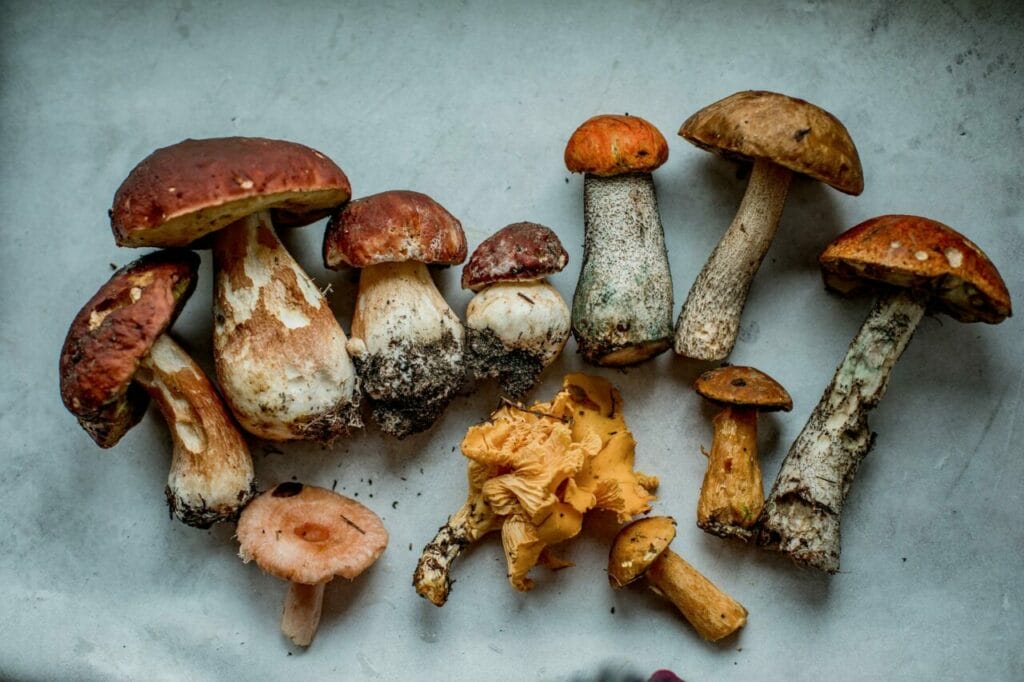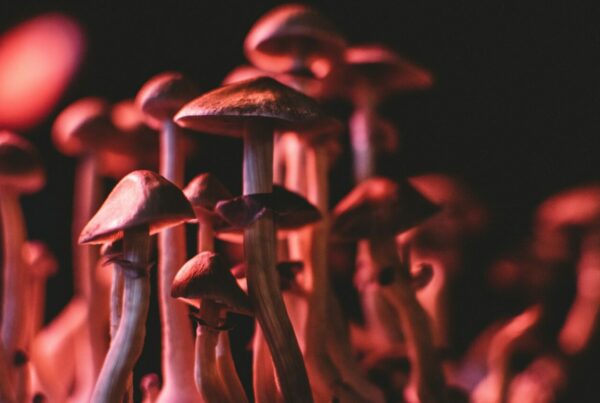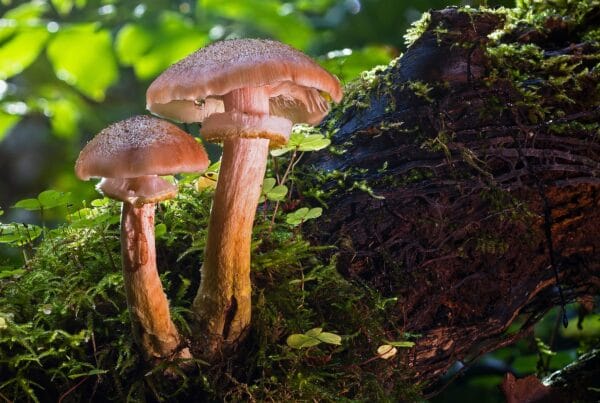Traditional anxiety treatment typically involves medication and therapy. However, these methods might not work for everyone due to possible side effects. This has led to a growing interest in alternative solutions such as psychedelic therapy, which uses substances like “magic mushrooms Montreal” and others.
Your preferred destination to buy psychedelics online in Canada is here. We provide quick, secure, and unnoticeable services.
[toc]Key Points:
- Psychedelic therapy combines the healing powers of psychedelic substances with traditional talk therapy to enhance the recovery process.
- Psychedelic therapy can improve emotional wellbeing and overall quality of life by facilitating spiritual experiences.
- The integration process, a crucial component in psychedelic therapy, ensures the therapy’s long-term effectiveness.

Statistics of Anxiety Disorders in Canada
The 2022 Mental Health and Access to Care Survey data shows an alarming increase in the prevalence of anxiety disorders in Canada. The proportion of Canadians aged 15 and above diagnosed with generalized anxiety disorder in the year before the survey has risen from 2.6% in 2012 to 5.2% in 2022.
Comparing Conventional Treatment and Psychedelic Therapy
Standard treatments for anxiety disorders often combine psychotherapy and medication. Psychotherapy, also referred to as psychological counselling, is a collaborative process between a therapist and the patient to mitigate anxiety symptoms.
On the other hand, anxiety medications work by tailoring treatment to the specific anxiety disorder and considering any simultaneous mental or physical health issues. Regardless of individual variations, psychotherapy and medication remain the cornerstone of treatment.
In psychedelic therapy, the sessions stand out as they include one or two doses of a psychedelic substance, along with other therapeutic
Techniques:
Therapy with Psychedelics
Psychedelic therapy is a form of therapeutic intervention that employs the advantages of psychedelic substances to enhance the healing experience. Known for their hallucinogenic properties, these substances have been integral to holistic medicine and spiritual customs in diverse cultures for millennia.
The two substances predominantly used in these therapeutic procedures are Lysergic acid diethylamide (LSD) and psilocybin. LSD triggers changes in mood, perception, and consciousness. Psilocybin, according to the Health Canada website, is the active ingredient in magic mushrooms. Consuming these mushrooms can incite sensory perceptions, such as visual, auditory, or tactile hallucinations.
Dosage Scope for Three Sessions
In psychedelic therapy, professionals assess patients to determine the appropriate psilocybin dosage for their sessions. The dosage varies, with some patients beginning with moderate amounts, while others can handle larger quantities of the substance. The treatment plan usually consists of one to three medication sessions, each lasting six to eight hours and separated by several weeks. This method is different from traditional medications that require daily intake until a healthcare expert recommends otherwise.
Spiritual and Transformational Experiences
Anxiety medications don’t stimulate transformative visions or feelings of divine connection. They aim to control symptoms, whereas therapy intends to tackle the root causes of the disorder. Psychedelic therapy can significantly impact emotional health and quality of life.
The immersive experiences can result in profound realizations, heightened self-awareness, and better emotional processing. These impacts can encourage personal development, inspire positive behavioral alterations, and enhance overall mental health.
Impacts
| Expanded Consciousness | Altered states of consciousness provide a new outlook on the world. | Such increased awareness typically results in the following: Profound realizationsRevelationsEnriched comprehension of oneself and one’s surroundings |
| Emotional Healing | Enables emotional healing by giving the chance to face and process unresolved trauma, grief, or emotional pain. | This procedure aids in:Tapping into deeply hidden emotionsReleasing emotional hindrancesFostering emotional well-being |
| Increased Self-Awareness | Enhances connectivity among sensory brain regions while reducing connectivity within the default mode network. This network integrates brain areas that are interconnected, focusing on introspective thinking and the subjective perception of oneself.” | These areas contribute to: Modifying negative thought processes, beliefs, and recurrent behaviors. Empowering users to glean profound understanding about their true selves, motivational factors, and interpersonal dynamics. |
Somatic Therapy
Somatic therapy, while not traditionally linked with psychedelic therapy, is garnering recognition for its potential benefits. This body-centric technique explores the connection between the mind and body. It’s predicated on the idea that past traumas can result in sensations becoming lodged in the body. Somatic therapists help individuals identify these bodily sensations and utilize therapeutic methods to alleviate this tension.
Integration
This provides an avenue for clients to attain clarity, gain perspective, and cultivate wisdom from their psychedelic journeys. The transformational process occurs during integration sessions with the therapist and the client’s proactive measures outside of psychedelic explorations. Integration enhances the transformative impact of psychedelics by actively engaging with surfaced insights and emotional revelations.
Types of Integration
- Journaling. By documenting experiences, individuals can solidify memories for easier future recollection. It also enables clients to examine their experiences from various perspectives to unearth different interpretations, meanings, and relationships.
- Art. This provides an efficient way to encapsulate a psychedelic journey’s complex emotions and feelings in a creative and visually expressive medium.
- Adopting Nature-based Practices. These can be as simple as taking mindful walks in the woods or seeking tranquillity by a calm body of water. Therapists can assist clients in recognizing the intricate patterns within nature or suggest using natural elements like plants, stones, water, and candles as grounding tools.
- Participating in Integration Groups. Group sessions with individuals undergoing similar experiences offer a substantial platform for reflection, support, and bonding. The capability of psychedelic therapy to spark a sense of interconnectivity and mutual understanding surpassing individual limitations is central to its approach.
The Function of These Techniques in Anxiety Treatment
The foundational pharmacological principle behind all psychedelics is their ability to act as agonists, or activators, of serotonin (5-HT) 2A
The study of psychedelics primarily focuses on their influence on the brain’s default mode network. This network is strongly tied to repetitive thoughts and is related to conditions such as depression and anxiety disorders. Treatment can significantly reduce anxiety levels, with the effects lasting up to 12 months after treatment.
After a psilocybin session, which often includes profound spiritual experiences, the patient converses with their therapist. During these therapy sessions, trained healthcare professionals strive to listen attentively to the patient and employ specific practices to maximize the positive effects of treatment.
All these techniques work together to help individuals with anxiety achieve lasting relief in fewer sessions compared to traditional treatments.
Change Your World, One Session at a Time
Many individuals rely on traditional anxiety treatments, but not all find them effective or satisfying. Psychedelic therapy presents an alternative, using unique strategies that can trigger transformative experiences. These methods work together to yield deep, long-lasting results—sometimes lasting up to a year after just one to three sessions.
Besides improving mental health, this therapy could also result in significant cost savings for patients. Ready to discover a new path to wellbeing? Explore the potential of psychedelic therapy with Shrooms Near Me Canada.
Commonly Asked Questions
Is a specific type of magic mushroom used for psychedelic therapy?
In studies relating to psychedelic-assisted therapy, it is often overlooked to specify the type of mushroom used. Psilocybe cubensis is typically the mushroom of choice.
Various strains are available at online magic mushroom dispensaries to suit different preferences. You have the freedom to choose any strain to experience the therapeutic effects of psychedelics. However, be careful and choose a reputable vendor to avoid purchasing unsafe magic mushrooms from unreliable sources.
What is the duration of psychedelic therapy?
Psychedelic therapy consists of several stages and its length can vary. A single session where the psychedelic is taken lasts between 4 to 8 hours. The entire therapy process, including preparation, the session, and follow-up discussions, could last from a few weeks to several months.
Regarding long-term effects, individuals often report improvements in their mental health for several months or even up to a year after therapy.
Several sessions are typically included in the course of a year.
Does the therapist guide the patient on their spiritual journey?
During the therapy, patients can be guided by professionals such as therapists or other support staff. Research suggests that Spiritual Health Practitioners (SHPs) offer unique and invaluable insights to improve participants’ well-being and support their progress on their spiritual journey. Some individuals choose to seek guidance from an SHP, while others rely on the therapist or specialist available.
Does the concept of “set and setting” play a role in psychedelic therapy?
Yes, both the individual’s mindset (set) and the physical surroundings (setting) are vital in safely guiding spiritual experiences during a psychedelic therapy session. The individual’s mental state influences their spiritual journey, affecting the experience both before and during the psychedelic session. The course and intensity of the experience are influenced by factors such as beliefs, expectations, emotional states, and intentions.
Primary Source: Psychedelics as Emerging Treatments for Anxiety Disorders: Opportunities and Challenges in a Budding Field – PMC (nih.gov)
About the Authors:
Franklin King, IV, MD, and Rebecca Hammond, MD
Related Articles:





